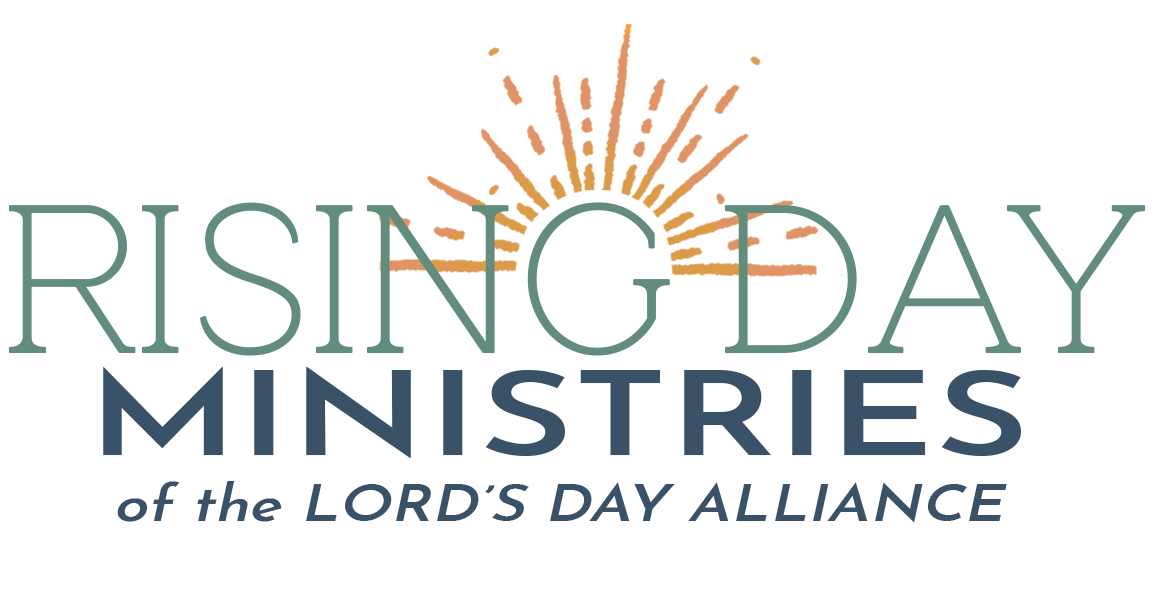Sabbath for All?
The LDA and the Early Sabbath Movements
by Rev. Dr. Larry Golemon, RDM Co-Director
His opponents thought he never slept. Dr. Wilbur Crafts, one of the founders and early field secretaries of the Lord’s Day Alliance, lectured six days a week, travelled to over 29 countries, wrote a book a year, and spoke before dozens of legislative bodies. He also wrote the poetry for more than 20 revival hymns. He had a long career as a minister-reformer around temperance and morals, and then he set his sights on defending Sunday as a day of rest for all Americans. Later, he opened an office in Washington D.C. called the Reform Bureau to coordinate lobbying around all of these Christian issues. Crafts was feared by numerous industries because of his tireless efforts to keep saloons, sports events, and other entertainment closed for the Sabbath day of rest. He wrote, “The law should not permit me to make another [person] work on the day of rest that I may be amused.”
The Lords Day Alliance (LDA) is part of a long history of Sabbath movements in the United States. Founded in 1888, the LDA was a latecomer to Sabbath organizations, which began in the 1820’s, flourished after the Civil War, and reached a fever pitch from the 1880’s to the 1920’s. The LDA worked with all of these groups toward a common aim: to gain national support from churches, labor unions, and governments for the Sabbath to be protected as a day free from labor, set aside for family life and moral improvement.
But why push a particular religious view of honoring one work-free day out of the week on a larger public? These religious reformers saw the Sabbath as central to the larger moral and social reform of American society. They did so because the mandate to keep the Sabbath was part of the Ten Commandments—which were seen as moral law binding on all people, not just Christians and Jews. They believed that devoting a day to remember the God of all creation and improve moral and spiritual well-being was important to all U.S. citizens and to national health.
Sabbath Not Just a Christian Thing:
Proponents of a Sunday Sabbath in the 19th century argued that the Sabbath was both a religious and a civil requirement. They believed the Sabbath commandment required society to protect one day in seven free from all labor, except charity work or necessary chores (like caring for livestock). Timothy Dwight, the president of Yale College, claimed that the Sabbath served more than spiritual aims, as it also “intended to give the laborious classes… an opportunity of resting from toil” (Treatise on the Sabbath, 10). The rest from labor became the rallying cry for a “civil Sabbath” that was protected by law at all levels: local, state, and national. Sabbath reformers mobilized the fourth commandment (or the third for Catholics, who number them differently) as a rallying cry for laws that protected workers from seven-day-a-week exploitation, thereby allowing for a day of family life, study, and devotion.
Sabbath a Social Reform:
The Sabbath movement was part of a host of “voluntary associations” that promoted Protestant literature, education, mission work, and moral issues throughout the country. Associations were formed to fight against the liquor and opiate industries, domestic abuse, and prostitution; others to promote the education of women, African-Americans, and the working class; and still others to minister to seamen, railroad workers, and new immigrants. A few engaged in then controversial issues of ending slavery and promoting women’s suffrage. Sabbath societies saw themselves at the center of social reform, because a day free from labor that was devoted to moral improvement and family life would build better citizens, workers, and Christians. Because the civil Sabbath was a duty of the entire society, the Sabbath movements lobbied governments keep most retail, entertainment, and travel businesses closed on Sundays, so that everyone could be guaranteed one day a week off. This Protestant vision was contrasted with the “continental Sabbath” of most Catholic countries in Europe (and many of their immigrants to the U.S.), which allowed for festivities, open markets, and public entertainment after Mass.
Sabbath a Protestant Agenda:
Earlier Sabbath movements were part of a larger Protestant agenda to shape the morals and values of the nation. Issues of temperance, morality and piety came together in once a week on a day devoted to family life and spiritual improvement. Many U.S. Catholic leaders supported this view of Sunday, but they did not join these Protestant societies as the latter attacked their “Romanism” as a threat to democracy and Biblical authority. Most Sabbath movements accepted that Jews had their own Sabbath day, but they vehemently argued against other Christians that had different understandings: they blamed Catholics for making Sundays too lax and festive, and they accused Adventist Baptists and Seventh Day Adventists (who worshipped on Saturday) as completely misunderstanding the Bible. The Sabbath organizations were supported by a host of denominations: especially Presbyterians, Congregationalists, Reformed, Baptists and Methodists, who set aside their differences to focus on the Sabbath as a tool for strengthening Protestant morality, religion and social control in an increasingly diverse society.
Early Sabbath Associations:
The Lord’s Day Alliance grew out of a host of earlier Sabbath associations. The first was the General Union for Promoting the Observance of the Sabbath founded in New York in 1828, followed by the American Foreign and Sabbath Union founded in Boston in 1844. Other organizations sprang up in Philadelphia, Baltimore, Charleston, and Cincinnati before the Civil War. After the war, Sabbath associations sprang in New England, New Jersey, Ohio, Wisconsin, Washington state, and California. The Lord’s Day Alliance (first called the American Sabbath Union) was founded in 1888, and over time it developed auxiliaries in all 50 states. Other voluntary associations joined the Sabbath cause, including the Sunday School movement, the YMCA, and the Society for American Reform (calling for “Jesus” to be put in the Constitution). Above all other groups, the Woman’s National Christian Temperance Union (founded in 1873) championed the Sabbath as a day when men, freed from work, would not revel and drink but instead would spend time with their wives and children. Frances Willard, a life-long president of the WCTU, called on this powerful women’s organization to “do all things” related to women’s lives, from fighting the liquor industry to women’s suffrage, and she called the Sabbath, “the nerve center of a Christian nation” (Gaines Foster, Moral Reconstruction, 96).
Most temperance and sabbath organizations, however, denied membership to black freedmen before the Civil War and to all African Americans after the war. Consequently, black reform leaders like Frederick Douglas, WEB Dubois and Ida B. Wells supported the building of black temperance lodges in major cities like New York and Philadelphia, on the grounds that slave owners had used liquor to keep their slaves sedate and compliant. Many of these lodges also supported Sabbath observance—especially as a time for Black Sunday schools to increase literacy and learning. One of the few organizations that allowed black membership was Frances Willard’s WCTU. But Willard went out of her way to build WCTU chapters throughout the South to the point that she endorsed many of the racist attitudes there and allowed those chapters to exclude black women. Ida B. Wells accused Willard of perpetuating myths that were used to rationalize lynchings of black men. Even though the WCTU finally declared itself against lynchings, and Frederick Douglas even came to Willard’s defense, the rift between black and white women in the organization had become permanent.
What Do We Learn from this History?
We live in an age that Wilbur Crafts and Francis Willard would not recognize, except that certain legacies of their work remain in the norm of a 40 hour work week (in theory at least), full voting rights for women, stricter laws around alcohol and drug access, and the closing of the Post Office on Sundays since 1912 (which the LDA helped accomplish). Willard might embrace some new attitudes toward sexuality (as she had a longtime female domestic partner). Crafts might applaud the modern Ecumenical movement, but he would be puzzled by a Catholic Church that now embraces work with Protestants (and vice versa). But today, we have to ask, what do we learn from them and other Sabbath champions that can shape the future of our ways of honoring the Sabbath, and the work we do at the LDA?
There are a number of books, manuals and articles from these movements that share good ideas for observing the Sabbath even today (and I will write more about those another time). But what about the public and political advocacy of the early Sabbath movements? Is that something to toss or to re-invent? Surely old tactics of legislating the closure of malls, movies, and bars on Sunday no longer serves the cause. Moreover the lines that the Sabbath movement drew between Catholic and Protestant, native and immigrant, black and white must be overcome again and again to promote Sabbath life. But the Sabbath movements did one thing well: they gave voice to the exploitation and exhaustion that working people knew so well but could do little about (except by escaping, sometimes in harmful ways). They offered a vehicle for public action to change labor practices, and a means to create another kind of “day off” that didn’t require expensive outings or recreations.
Just think, if we can practice a Sabbath life that creates safe, restful space from being overtaxed by work, over-stimulated by media, and overrun by anxiety, we can share invite others into that space and tell our stories. We should remember that we do this not only for our personal or family benefit, but also as a witness to others about how to “step out” of the frenzied world of our flat-wage economy and consuming entertainment systems. A day of real, rejuvenating rest is something that God wants for all people. And if we learn how to build and share that practice with others—whatever their faith (or none) might be, we invite them to reimagine how we might live as a society: less as wheels in the cog of wealth-producing machine (for some), and more as joyful creatures happy and thankful to be present to God and each other, at least one day a week.

